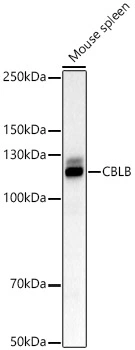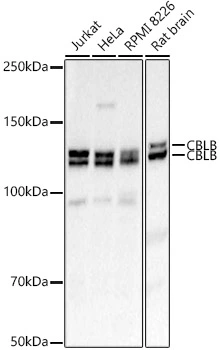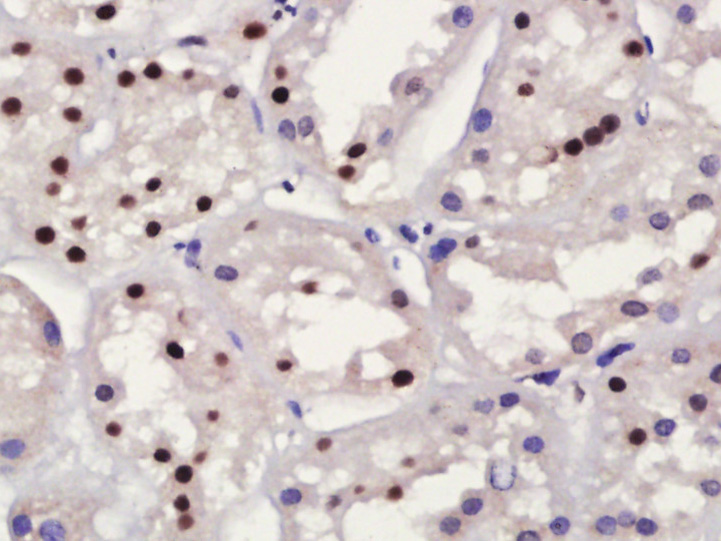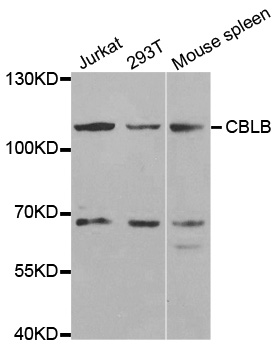
WB analysis of mouse spleen tissue lysate using GTX53915 Cbl-b antibody. Dilution : 1:1000 Loading : 25microg per lane
Cbl-b antibody
GTX53915
ApplicationsWestern Blot
Product group Antibodies
TargetCBLB
Overview
- SupplierGeneTex
- Product NameCbl-b antibody
- Delivery Days Customer7
- Application Supplier NoteWB: 1:500 - 1:2000. *Optimal dilutions/concentrations should be determined by the researcher.Not tested in other applications.
- ApplicationsWestern Blot
- CertificationResearch Use Only
- ClonalityPolyclonal
- ConjugateUnconjugated
- Gene ID868
- Target nameCBLB
- Target descriptionCbl proto-oncogene B
- Target synonymsADMIO3, Cbl-b, Nbla00127, RNF56, E3 ubiquitin-protein ligase CBL-B, Cas-Br-M (murine) ecotropic retroviral transforming sequence b, Cbl proto-oncogene B, E3 ubiquitin protein ligase, Cbl proto-oncogene, E3 ubiquitin protein ligase B, RING finger protein 56, RING-type E3 ubiquitin transferase CBL-B, SH3-binding protein CBL-B, casitas B-lineage lymphoma proto-oncogene b, signal transduction protein CBL-B
- HostRabbit
- IsotypeIgG
- Protein IDQ13191
- Protein NameE3 ubiquitin-protein ligase CBL-B
- Scientific DescriptionThis gene encodes an E3 ubiquitin-protein ligase which promotes proteosome-mediated protein degradation by transferring ubiquitin from an E2 ubiquitin-conjugating enzyme to a substrate. The encoded protein is involved in the regulation of immune response by limiting T-cell receptor, B-cell receptor, and high affinity immunoglobulin epsilon receptor activation. Studies in mouse suggest that this gene is involved in antifungal host defense and that its inhibition leads to increased fungal killing. Manipulation of this gene may be beneficial in implementing immunotherapies for a variety of conditions, including cancer, autoimmune diseases, allergies, and infections. [provided by RefSeq, Sep 2017]
- Storage Instruction-20°C or -80°C,2°C to 8°C
- UNSPSC12352203






